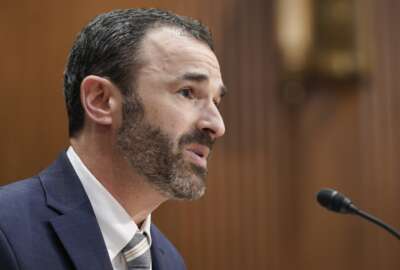5 things to know about Congress’ budget debate
By ANDREW TAYLOR Associated Press WASHINGTON (AP) — Congress’ annual budget debate pits Republicans against Democrats as the newly empowered GOP in the...
By ANDREW TAYLOR
Associated Press
WASHINGTON (AP) — Congress’ annual budget debate pits Republicans against Democrats as the newly empowered GOP in the House and Senate offer their alternatives to President Barack Obama’s budget. A primer on the key terms and players helps navigate through the complex, arcane process:
___
BUDGET RESOLUTION
First up is a nonbinding measure called a budget resolution. It sets out, in broad strokes, goals for spending, tax revenues and changes to crucial programs like Medicare, Medicaid, food stamps and student loans as well as the health care law. Lawmakers in the House and Senate vote on the resolution, but it stays in Congress, never reaching the president’s desk. Instead, it requires follow-up legislation to implement any changes proposed by the resolution, and that’s often a major challenge.
____
RECONCILIATION
If Congress succeeds in adopting a joint House-Senate budget resolution — more likely this year with Republicans controlling both chambers — it sets the stage for a special follow-up measure known as a reconciliation bill. The budget resolution directs committees to come up with policies following reconciliation instructions but doesn’t dictate how to do so. Only policies that have a measurable effect on the deficit can be included in a reconciliation bill. Republicans have yet to decide what they want to use reconciliation to try to accomplish, though there’s a lot of sentiment to try to repeal as much of Obama’s 2010 health care law as possible.
____
SPENDING CAPS
There are two basic categories of federal spending: discretionary and mandatory. Mandatory spending is money used as if on autopilot for programs like Medicare, food stamps and Medicaid and is changed only if Congress acts. Spending caps apply to discretionary spending, the day-to-day agency operating budgets that Congress must pass each year. The cap or limit on spending for the 2016 budget year beginning Oct. 1 — $523 billion for defense and $493 billion for other programs — has been set by a 2011 budget law. Lawmakers can’t raise it through the budget resolution.
____
SEQUESTRATION
So-called budget sequestration — harsh, across-the-board cuts — is a result of the 2011 Budget Control Act, a hard-fought deal between Obama and Republicans that traded spending cuts for a $2.1 trillion increase in the government’s borrowing limit. The country faced a growing deficit; the law called for cuts of $900 billion over a decade and created a “supercommittee” to find $1.2 trillion in additional savings. The cuts were a backstop in case the supercommittee failed. It did, and about $90 billion in sequestration cuts slammed the government in 2013. After modest relief in 2014-15, automatic cuts of $54 billion to defense programs and $37 billion to nondefense accounts are kicking in again.
____
ENZI AND PRICE
Sen. Mike Enzi, R-Wyo., is the new chairman of the Senate Budget Committee and Rep. Tom Price, R-Ga., is the new chair of the House Budget Committee, replacing Paul Ryan, R-Wis., the 2012 vice presidential nominee. They’re responsible for shepherding the budget through their respective chambers.
The tea party-flavored House is expected to be more aggressive in promising cuts to programs like Medicare, Medicaid, food stamps and welfare. Price, an orthopedic surgeon, is a quick study and deeply conservative, though the budget post demands a pragmatic streak. Enzi is an affable accountant who had a penchant for compromise when serving as the top Republican on the Health, Education, Labor and Pensions Committee. Both men are likely to need lots of help from party leaders in moving their budgets through the process.
Copyright 2015 The Associated Press. All rights reserved. This material may not be published, broadcast, rewritten or redistributed.
Copyright © 2025 The Associated Press. All rights reserved. This website is not intended for users located within the European Economic Area.






